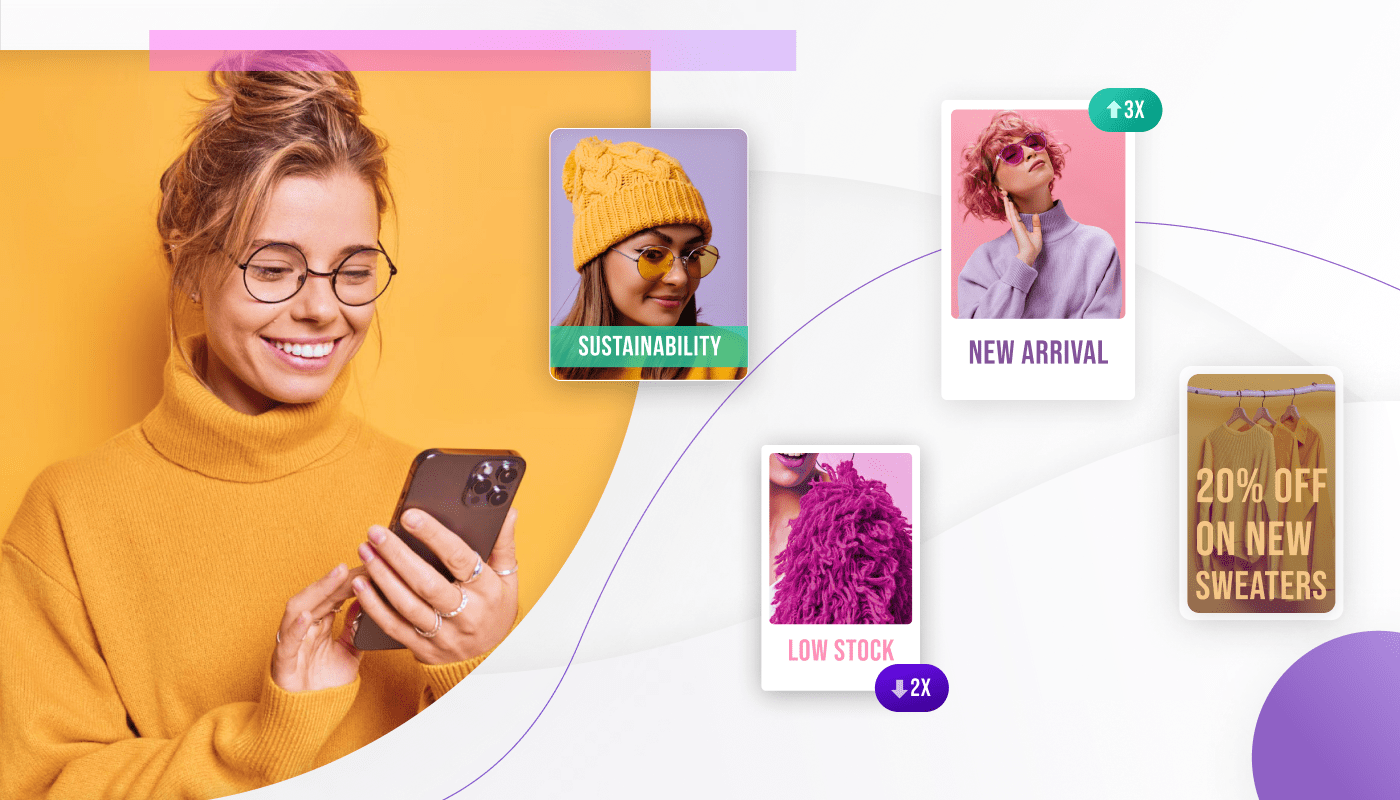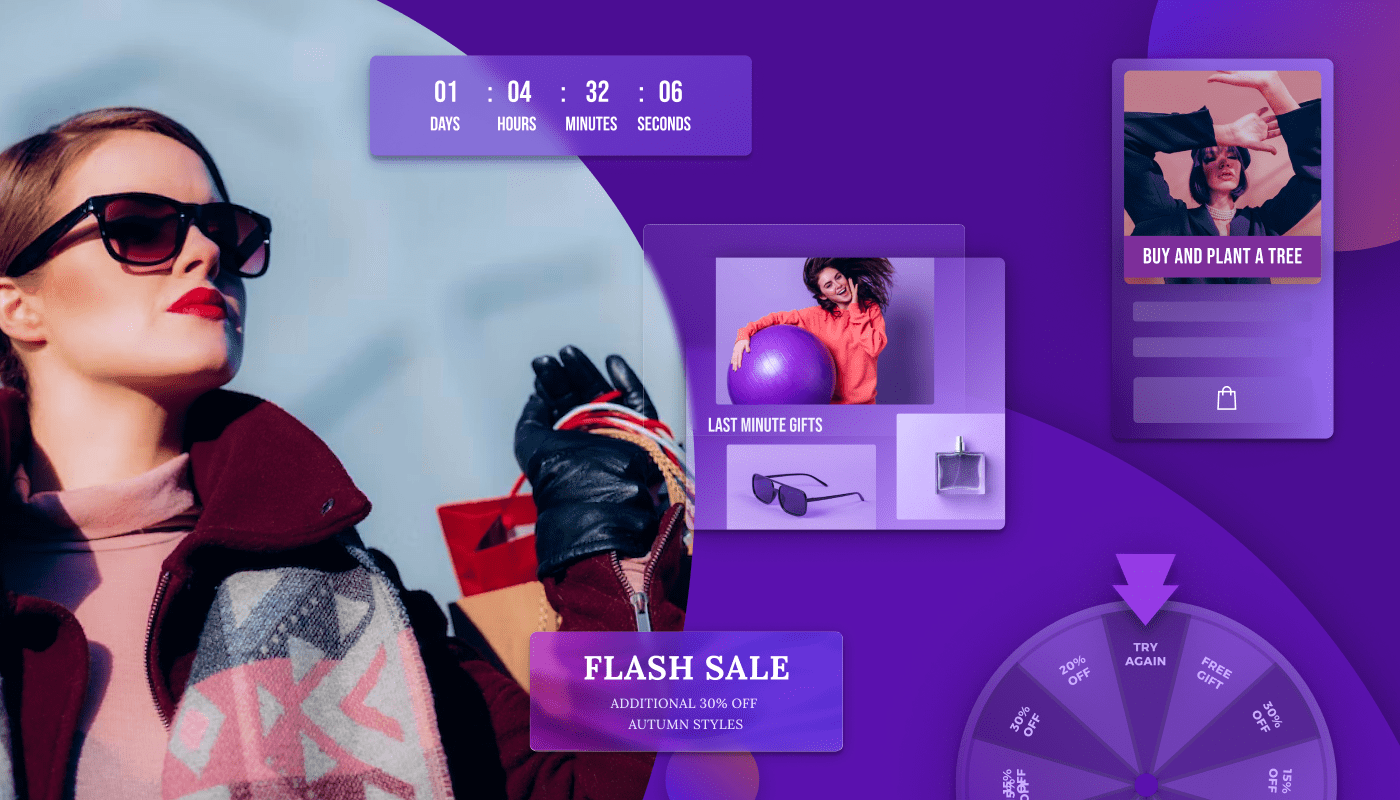Known as Cyber Week, Cyber Five, Black Friday Weekend among other things, the last few days of November have become synonymous with a flood of deals online. Promotions continue to spread out to the whole month, but every year they still end with a bang. Despite a slight dip from 2020, November 26–29 online spend per day was again in the $8–10 billion range in the US alone. Consumers around the world browsed away in search of genuine savings.
We ran a small global survey to explore behavioral trends in this socially less distant year of online shopping. Our goal was to uncover true sentiments, and better understand Cyber Week as a teaser for the 2022 ecommerce landscape. Here are 5 trends that stood out and the opportunities they hold for brands:
Trend #1: Fast and courteous wins the race.
Yes, good discounts and promotions drive consumers to an ecommerce site. With the rise of price comparison apps, intelligence and optimization tools, however, no single player’s price is that far off in a given market. So, what happens when there is a level playing field? When you take out ‘cheap’ from the infamous Venn diagram, the remaining expectations are ‘fast’ and ‘good’.
Delivery right here right now.
64% of surveyed shoppers said they prioritize fast/free shipping when selecting an online retailer. 26% want their delivery fast, 25% want it free, and 13% want both.
Until a few years ago, most consumer surveys reported high demand for free shipment. Fast shipment was a premium service valued by a smaller group of shoppers. Then came the pandemic, shifting a larger share of purchases online, with temporary restrictions on the physical on-demand alternative. Meanwhile, under-15-minute delivery apps set the bar high on the last-mile, and continue to raise expectations followed by online grocers and marketplaces.
The pandemic world heightened the sense of urgency in online purchases, while the rapid delivery apps made super-fast possible.
In the case of Cyber Week, there is always extra pressure induced by greater volumes. People also expect their gifts to be ready before the holidays.
Better customer service and experience.
For 37% of shoppers, good customer service was one of their top 3 reasons for choosing an online retailer. The next two were product variety (34%), and an easy checkout experience (33%).
From awareness to checkout and aftersales, customer service can offer much more than issue resolution. A live chat function can provide styling advice on the spot. Or, a chatbot can help navigate through the various payment and delivery options. Gartner similarly defines success as providing “a well-balanced customer experience, fulfilling user needs at specific points in the path to purchase and catering to those who prefer using self-service features and those relying on assisted channels”. The common theme is, it should be fast and frictionless. Shoppers are the most annoyed by waiting and repeating themselves to different reps.
As a capability, customer service should support the buyer journey as a whole with consistent and timely assistance.
And that requires an end-to-end view of the shopper. It is critical both to understand the need and to capture feedback for the future.
Trend #1 Opportunities for Brands:
- Better faster with real-time data. From managing demand to dynamic workforce planning, use cases for embedded AI and ML are endless. Increase visibility and personalization at every step to fast-track improvements.
- Get ahead with strong tools & partners. Build, buy or integrate with solutions designed to accelerate delivery and enhance service. Scale faster and farther with smart software.
- Improve promises if not performance. Shoppers tend to be more loyal to retailers that are open and honest about their proposition. Enhance transparency and tracking to align expectations even for the same service level.

Trend #2: Main frustrations remain.
We requested participants to name the most disappointing part of their Cyber Week online shopping experience. Or, with a positive spin, what areas had the most potential for improvement. And their ask was simple: Finding what they need quickly, using reliable platforms, without being harassed.
In search of better search and other PIM-provements.
With 45%, the top disappointment among online shoppers was searching for specific products. Other product related issues included stockouts (42%) and lack of information (32%).
As evidenced in the previous section, consumers prefer product variety, but they definitely don’t want to get lost in it. With Google as a near-utopian benchmark, on-site search has a lot of ground to cover from better contextual interpretation to extensive category-relevant filtering. In some cases, even the most basic queries do not yield results due to indexing or data availability issues. Or, shoppers do more vague thematic searches such as summer cocktail dress and the results go rogue showing cocktail recipes.
On-site searchers are on a mission either to buy or get inspired. In the right environment, their conversion rate can be 2–4x higher than the rest.
Effective product information management (PIM) plays a vital role in improving both search results and conversions with high quality data. Even with the best search results, consumers still want to have more information about products and their alternatives before they proceed to checkout.
Held back by technology limitations.
Another 45% of participants were disappointed with slow page loads and/or technical errors during their Cyber Week online hunt.
Similar to search, innovators are continuously raising consumer expectations on the technology front where the rest appear more and more lagging. By now, very few consumers are willing to wait for more than 3 seconds for a page to load. Most would immediately bounce if the site crashed especially around a checkout page. The stakes are even higher for mobile. A Deloitte Digital study found, a 0.1s improvement in site speed increased conversions and average order value by more than 8%, and decreased bounce rates by almost 6%.
Yet, crashes and outages were a common occurrence this year with even big-name brands like Walmart and Office Depot being hit. Most online retailers struggle with handling sudden surges in volume and effectively scaling their capacity. With less-flexible monolithic architectures it is an even bigger challenge.
Diminishing returns from too much attention.
23% of online shoppers agreed one of their top 3 disappointments around Cyber Week was receiving excessive ads and promotions.
Overexposure can be overwhelming since communications start as early as November 1st and continue throughout the month. Shoppers are subjected to various digital, TV and physical ads as well as receiving multiple daily communications in their inbox. And it’s getting even more crowded. According to a GroupM report, global advertising spend was up by 37.5% in 2021 with digital representing 64%. Meanwhile, increased competition and decreased targeting due to data privacy limitations are driving up costs with lower returns.
“Adding value to someone’s life beyond just capturing their attention — whether by offering more curation, boosting discovery, or cultivating fandom.” — GWI
This is what GWI recommends as a cure against “attention recession” for 2022. In the context of advertising and marketing, it highlights the importance of first-party data and personalized communication. Because, most of your target audience may as well love receiving frequent updates from you. It is critical to distinguish groups with different needs and preferences to optimize the overarching strategy. And leave the exhausted 23% alone at least for a while.
Trend #2 Opportunities for Brands:
- Uplift the product experience. Leverage user-generated & live content to augment product information, hyper-personalize and optimize search.
- Dust off your technology stack. Don’t delay revamping outdated technology. Move onto a flexible architecture that will grow and change with your business.
- Shift gears towards personal relevance. As tracking gets more challenging, find better ways of targeting consumers with value-adding communications to counter fatigue.

Trend #3: Post-lockdown positivity prevails.
Starting this summer, many sources have been reporting a steady recovery in consumer sentiments up to pre-2020 levels. Despite new COVID variants, economic uncertainty, labor and supply chain shortages, hope is an undeniable part of the human condition. We see this sense of relief carry into the holiday season with a positive view of shopping experiences.
Pursuit of happiness in an uncertain world.
59% of online shoppers surveyed state they had a much better experience than last year. Overall, 81% had positive feelings about their Cyber Week adventure compared to 2020.
Parallel to a recent McKinsey survey, this optimism is mainly “driven by higher-income and younger consumers”. In our survey too, shoppers with a positive Cyber Week experience are 3 times more likely to come from high-income households and have a larger share of age 25–44.
“Optimism isn’t uncool, it’s rebellious, and in times of uncertainty it’s a brave choice.” — WGSN, _Future Consumer 2022_
Purchasing power is not the only factor fueling optimism. Other themes such as self-care, returning to familiar habits, and finding purpose also support and cultivate a positive outlook. More people are cautious but ready to make up for lost time and make it worthwhile.
Trend #3 Opportunities for Brands:
- Carry on the festive spirit. As fear and anxiety continue to be central to our daily newsfeed, any genuine message spreading positive vibes will be the perfect antidote.
- Emphasize self-care and wellness. From ‘treat yo self’ escapism to mindfulness and fitness, craft experiences that cater to the diverse needs of shoppers.
- Review payment strategies for wider inclusion. Incorporate more flexible models such as Buy Now Pay Later (BNPL) to facilitate participation primarily in essential categories such as grocery and home improvement.

Trend #4: Channels come alive & multiply.
Possibilities are endless when all you need is a buy button to create a new channel. As in the case of Zalando, even Google Maps can be your runway and storefront. With continuous innovation and the hype around metaverse, we expect commerce channels to be everywhere and more immersive than ever.
The rise of constant commerce and shoppertainment.
73% of online shoppers in our survey stated they used at least 2 different digital channels during Cyber Week. 44% shopped on social media, and 35% participated in live video shopping.
Mobile in-app commerce and social media browsing have long been convenient counterparts. But, with the growth of social selling and micro influencers, passive shopping is no longer that passive. People can interact with products in more ways than one and directly finalize their purchase. Some are able to unlock deals exclusive to channels whereas others ask bots for inventory status and shopping advice.
“Shoppertainment provides consumers with a more personal, interactive, and engaging experience. It addresses online shopping pain points around trust, pricing, and immediacy.” — Forrester
Live video shopping, a major driver of shoppertainment, is rapidly gaining momentum in the US and Europe after its birthplace of China. According to the Forrester survey, “electronics, fashion, and cosmetics are the top categories” where product quality concerns can be relieved by expert or trusted influencer demos. People also look forward to experiences unique to the channel such as collecting coins, limited-time offers, and collaborative games with friends.
Trend #4 Opportunities for Brands:
- Decompose your technology architecture. Don’t reinvent the wheel every time you add a commerce channel to your mix. Establish frontend freedom with a modular headless backend.
- Entertain your shoppers. Experiment with livestreaming and other interactive models to engage more with your community. Be spontaneous and imperfect.
- Elevate cross-device experiences. Design consistent, familiar checkout flows to facilitate adoption and instill trust.

Trend #5: Shoppers are conscious, contextual & complex.
The year 2020 brought a lot of online firsts which are now turning into habits. These habits are creating shifts much more fundamental than shoppers starting their spree earlier than usual. Three main themes, in particular, are solidifying their ground and will be instrumental in defining the enigmatic consumer in the coming years.
Sustainability becoming a North Star.
46% of online shoppers surveyed view themselves as sustainable and eco-conscious buyers.
Even though the allocated focus and effort varies considerably, sustainability is increasingly becoming a part of the buying decision. Delivery footprint is a primary consideration being addressed with recycled packaging and environmentally friendly transportation solutions. Circular economy is gaining traction with fashion brands and aggregators promoting reuse and resale of pre-loved items. Virtual fashion is on the rise with conscious brands digitizing experiences from runways to design samples.
“When it comes to eco-conscious shopping, people don’t want to trade quality, convenience, or affordability for sustainability.” — Think with Google
A recent benchmark survey found that only 23% of shoppers were willing to incur higher costs to make their delivery more sustainable. For most consumers, it continues to be something they expect from the brands.
What happens in the season, stays in the season.
A whopping 86% of participants said their shopping behavior was different during Cyber Week compared to the rest of the year.
With potential to stretch out further into November, the hunting mode manifests itself on multiple fronts. Supported by the constant commerce trend, time spent shopping online is much longer (64%), and involves more social interactions than usual (45%). With longer times, buyers get a chance to view a wider range of products (55%), and compare more alternatives than they typically do (45%). For over half of the participants (51%), it is also the best time of year to buy in bulk.
Even with lesser deals, online shoppers continue to buy into the spirit of Cyber Week. It is a great opportunity for brands to capture higher spend share keeping in mind most of the behavioral insights captured will not extend to the rest of the year.
Shape-shifting between multiple personas.
When asked about which buyer profiles they identify with, 89% of participants selected more than one. They had 9 options to choose from, and at first glance, some selected combinations were more contradictory than expected. Think impulse-buying long-term planners and casually-exploring fast in & out buyers.
Upon closer examination, however, it all makes perfect sense. Gift buying vs. shopping for yourself are two completely different mindsets. Browsing patterns may change when you are shopping for a family member vs. a colleague. Essential vs. non-essential categories capture different levels of interest. Your tendency to explore may as well depend on the user-friendliness of the site you are on. In essence, this points to an increasing level of self-awareness among consumers rather than confusion, and highlights the fact that personal context is vital.
Having multiple personas doesn’t mean they are everything all the time, it just means they may be a completely different thing every single time.
Under these circumstances, traditional micro-targeting practices are no longer enough. On-the-spot learning and instantaneous decisions are necessary to get into the consumers’ headspace.
Trend #5 Opportunities for Brands:
- Small guiding steps towards sustainable living. Consumers expect brands to inspire them in becoming more sustainable. Prioritize and promote actions that are easier to take and habitual in the long run.
- Personalize and refine on the fly. Go beyond standard recommendations and customize everything in real-time based on contextual cues.
- Always leverage what you know. Your customers may not always behave exactly the way they did during Cyber Week, but that behavior is still valuable. Don’t fall into the trap of amnesia, and always back up real-time actions with collective knowledge.
Final Thoughts
It’s beginning to look a lot like next year. Exciting trends are ahead from constant commerce to super-fast delivery and conscious self-caring consumerism. We expect smart technologies to be at the forefront in tackling these themes, and are excited to do our part here at Rierino.



